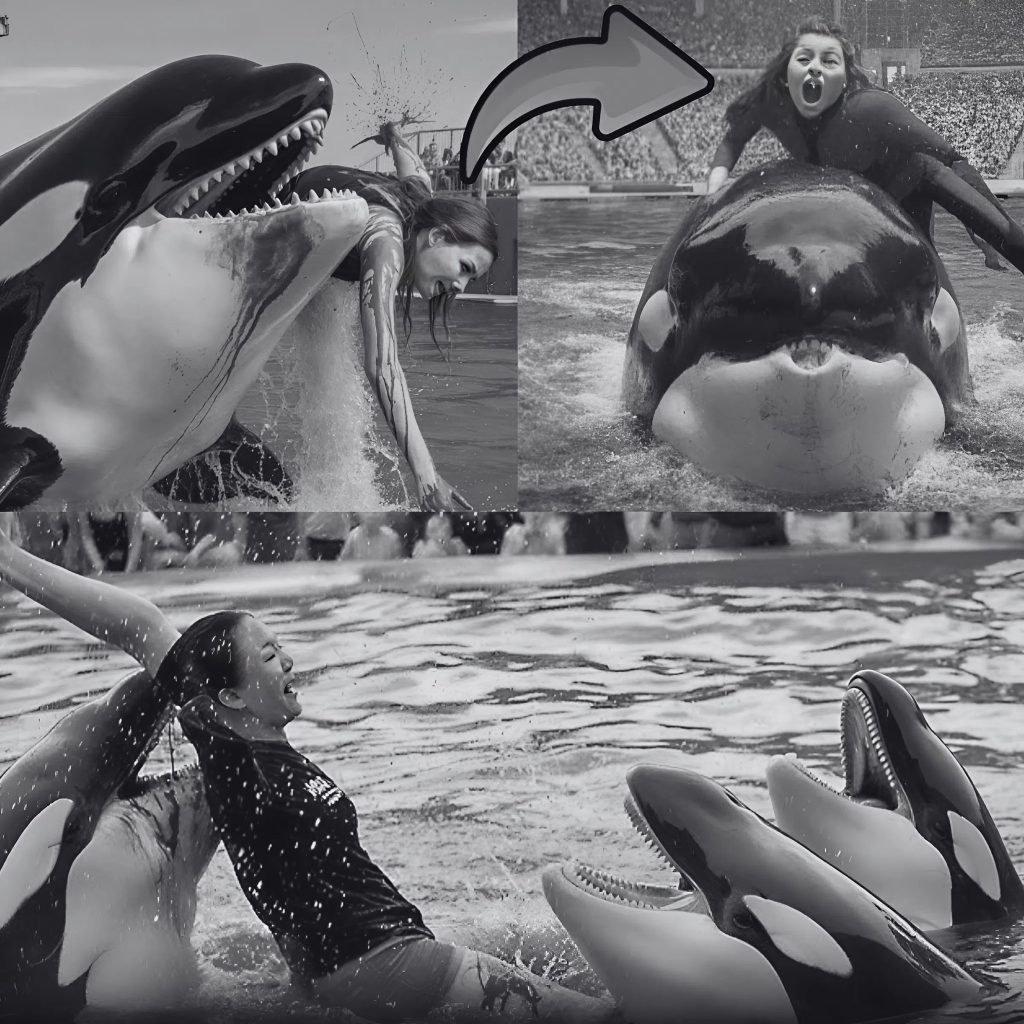
Eyewitness reports and video surveillance showed that Radcliffe followed standard protocols. Nothing about the session indicated unusual behavior—until the moment Naru turned aggressively, pulling her underwater and refusing to release her. The tragic incident shocked both the public and marine biologists. While initial reports suggested a tragic misjudgment or a spontaneous act driven by the animal’s natural instincts, new information may suggest otherwise.
An internal investigation led to the discovery of a strange object buried at the bottom of Naru’s tank. Maintenance divers found a rusted metallic device, unlike anything that should have been in a controlled marine environment. Experts believe it may have been a tracking or signal-emitting device, possibly emitting ultrasonic frequencies. The device had no identification markings, and its origin remains unknown. What is known is that its signal range matches the same frequencies orcas use to communicate and navigate underwater.

Marine behaviorists now suspect this device may have interfered with Naru’s neural responses or triggered artificial distress. Orcas are highly sensitive to sound, and any unnatural sonic disturbances can create disorientation, agitation, or even perceived threats. If this device was active during Radcliffe’s training session, it could have sent Naru into a state of fear or confusion, compelling a defensive or aggressive response.
This theory aligns with previous research indicating that marine mammals in captivity are prone to psychological stress when exposed to artificial stimuli. Chronic stress, confined space, and lack of natural social structures can lead to what scientists call “captivity-induced aggression.” However, the presence of an external stimulus—like the newly discovered device—introduces a more sinister possibility: that the aggression may not be entirely instinctual but provoked or manipulated.
The Oceanic Life Center has declined to comment in detail but confirmed the discovery of the device and stated that third-party investigators are examining both the object and the facility’s security systems. Meanwhile, animal rights organizations are calling for full transparency and have reignited demands to ban orca captivity altogether. For many, Radcliffe’s death is no longer just a human tragedy; it is emblematic of a flawed system that prioritizes entertainment over animal welfare and safety.

Investigators are also considering whether the device was planted intentionally. The idea that someone could have sabotaged the tank or attempted to manipulate the orca’s behavior raises serious ethical and security concerns. If proven, it could mark the first recorded case of deliberate psychological interference leading to a fatal marine mammal incident. Whether for experimentation, revenge, or activism, such actions could have devastating consequences for both humans and animals.
Several former employees of marine parks have come forward, sharing stories of similar behavioral anomalies among orcas that were dismissed or suppressed by management. Some reported sudden behavioral changes following maintenance work or unexplained disruptions in training routines. While not all claims are verified, they contribute to a growing narrative that the causes of aggression in captive whales may be more complex and less understood than previously thought.
The scientific community is now pushing for more advanced research into orca cognition and emotional intelligence. Orcas are known to mourn their dead, use sophisticated language, and form tight family bonds. If something external interferes with their mental well-being, the consequences can be fatal. This perspective is shifting the way marine parks, lawmakers, and the general public view marine animal captivity and trainer safety.

As investigations continue, Jessica Radcliffe’s family has expressed hope that the truth—no matter how uncomfortable—comes to light. They have also started a foundation in her name, promoting ethical marine research and supporting legislative efforts to end large marine mammal captivity.
The tragic incident surrounding Radcliffe’s death is a stark reminder that nature, even when confined within glass and concrete, retains its complexity and unpredictability. If this was not a coincidence but a chain of preventable or deliberate events, it underscores the need for accountability, transparency, and a reassessment of how humanity interacts with the most intelligent creatures in the ocean. Whether the aggression was instinctual, provoked, or something more sinister, the evidence emerging suggests this case is far from closed.